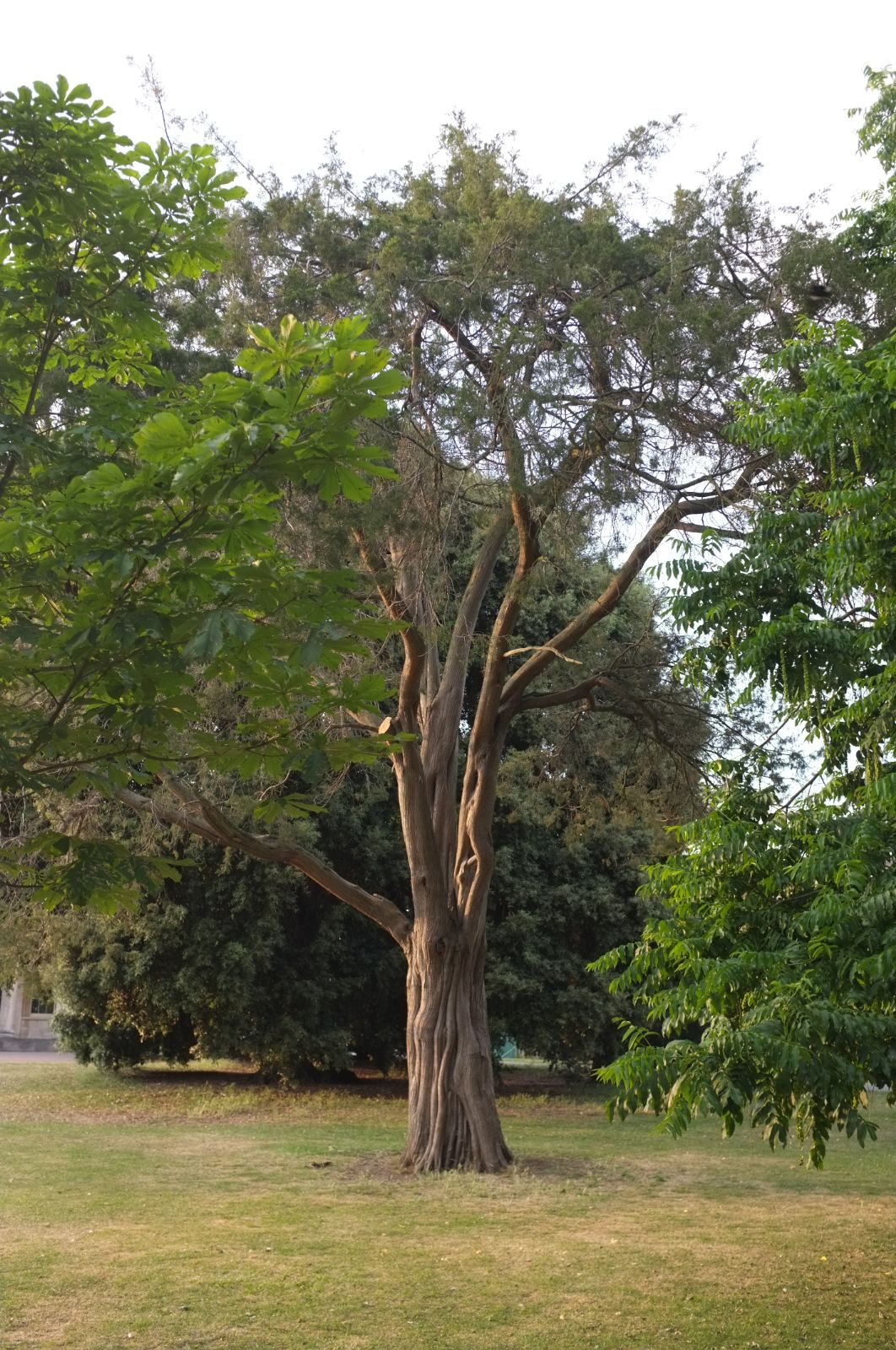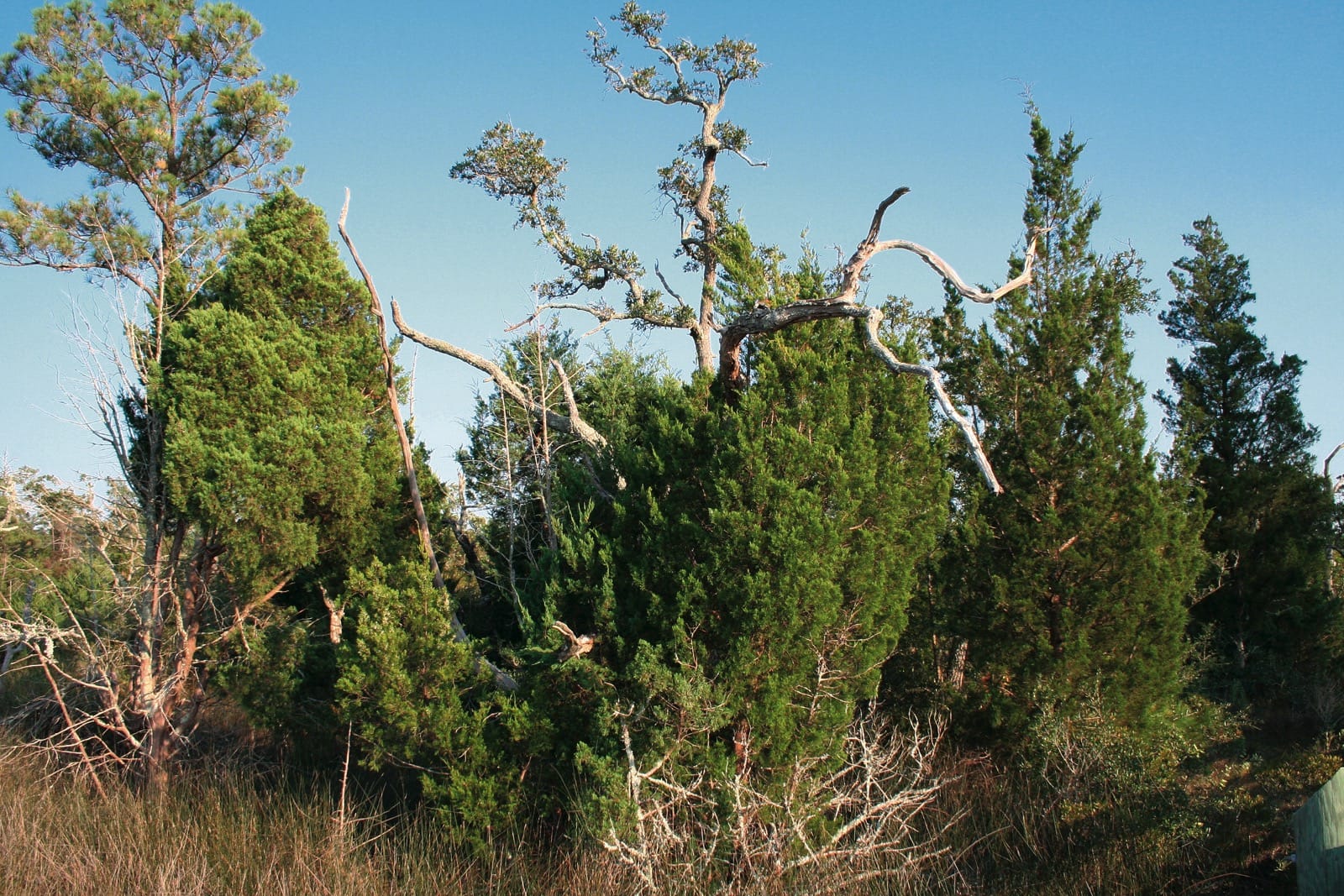Juniperus virginiana
Credits
Article from Bean's Trees and Shrubs Hardy in the British Isles
Article from New Trees by John Grimshaw & Ross Bayton
Recommended citation
'Juniperus virginiana' from the website Trees and Shrubs Online (treesandshrubsonline.
Genus
Common Names
- Eastern Redcedar
Infraspecifics
Other taxa in genus
- Juniperus bermudiana
- Juniperus cedrus
- Juniperus chinensis
- Juniperus communis
- Juniperus conferta
- Juniperus deppeana
- Juniperus drupacea
- Juniperus excelsa
- Juniperus flaccida
- Juniperus foetidissima
- Juniperus formosana
- Juniperus horizontalis
- Juniperus komarovii
- Juniperus occidentalis
- Juniperus oxycedrus
- Juniperus phoenicea
- Juniperus pingii
- Juniperus procera
- Juniperus procumbens
- Juniperus recurva
- Juniperus rigida
- Juniperus sabina
- Juniperus saltuaria
- Juniperus scopulorum
- Juniperus semiglobosa
- Juniperus squamata
- Juniperus thurifera
- Juniperus tibetica
- Juniperus wallichiana
A tree usually 40 to 50, occasionally 60 to 100 ft high; the bark peeling off in long loose strips. It is pyramidal when young, becoming more round-topped with age. Leaves of both awl-shaped (juvenile) and scale-like (adult) forms on the same tree. The former, arranged in pairs, are 1⁄8 to 1⁄4 in. long, pointed, concave inside and glaucous except on the margins, grey-green and convex outside, pointing forward. Scale-leaves 1⁄16 in. long, ovate, pointed (sometimes slenderly), thickened and convex outside, overlapping. Young specimens have none other than the awl-shaped type of leaf; as they grow older, branches of scale-like leaves appear until, in the adult state, the tree bears scarcely any other, and it is on these that the fruits are borne; fruits, however, are sometimes to be seen on branches bearing an intermediate type of leaf. Male and female flowers are usually separated on different trees, but occasionally appear on the same. Fruits roundish, 1⁄4 in. long, scarcely so wide, covered with a blue glaucous bloom, carrying one or two seeds.
Native of the eastern and central United States and eastern Canada; introduced about the middle of the 17th century. This juniper is by far the commonest and largest of the arborescent species cultivated in gardens. It likes a well-drained soil, is perfectly hardy, and altogether one of the best thriving of eastern N. American trees in this country, especially on chalky soils. From the next most common of tree-like junipers, J. chinensis, this in all its forms is best distinguished by its awl-shaped leaves being nearly always in pairs, and by its scale-like leaves being always pointed. Small plants are like J. sabina, but that to be distinguished by its peculiar rank smell when crushed.
J. virginiana is a variable species in the wild and it is believed that this variability may be due in part to crossing with neighbouring species.
Cultivars of this species are greatly to be preferred to seedlings and unselected plants, which usually become of ugly habit with age. The oldest specimens of these latter are about 35 to 60 ft in height and 51⁄4 to 101⁄4 ft in girth. The number of named cultivars is large, but the following arc the best known and are available in commerce:
From the Supplement (Vol. V)
specimens: Pains Hill, Surrey, 68 × 133⁄4 ft in 1912, now 60 × 153⁄4 ft at 3 ft (1981); Orwell Park, Suffolk, 48 × 71⁄2 ft (1981); Stanway, Glos., 50 × 71⁄2 ft (1982); Moncrieffe House, Perths., 47 × 63⁄4 ft in 1907, now 54 × 81⁄4 ft (1982); Touch House, Stirling, 44 × 7 ft (1983); Abbeyleix, Co. Laois, Eire, 66 × 91⁄2 ft at 2 ft, a fine conical specimen (1985).
cv. ‘Grey Owl’. – Similar to this, and possibly also a hybrid, is ‘Blue Cloud’; it makes a larger shrub, to some 4 ft high, much more in width. Both are of pleasingly informal habit.
† cv. ‘Pseudocupressus’. – Of narrow, columnar habit, with grey-green, mostly adult foliage. Raised in the USA and described in 1932. There are examples in the National Pinetum, Bedgebury, Kent, and at Westonbirt, Gloucestershire, both about 38 ft high.
cv. ‘Skyrocket’. – Apparently this spelling is correct, not ‘Sky Rocket’. It is perhaps the most slender of all conifers, a plant 15 ft high being not much more than 2 ft wide at the base. It is now usually listed under J. scopulorum.
From New Trees
Juniperus virginiana L.
Pencil Cedar, Eastern Red Cedar
This species was described by Bean (B497, S295) and Krüssmann (K150).
'Burkii'
Habit fastigiate, dense. Foliage blue-grey, slightly purplish in winter. It has attained a height of 20 ft at the R.H.S. Garden, Wisley.'Canaertii'
Habit columnar. Leaves rich green. Free-fruiting. An example in the National Pinetum at Bedgebury, Kent, pl. 1926, is 34 ft high (1969).'Elegantissima'
Sprays golden at the tips.'Glauca'
Under this cultivar name Van Ouden and Boom (Man. Cult. Conif., p. 200) describe a tree of narrow, columnar habit with thin, round, blue-bloomy branchlets and small glaucous appressed leaves (some leaves inside the plant acicular). But not all the plants that are or have been known by the name J. virginiana glauca belong to this clone.
'Grey Owl'
A spreading shrub 3 to 4 ft high and more in width, with silvery grey leaves and slender sprays. Very elegant. It is possibly a hybrid, with J. chinensis ‘Pfitzerana’ as the pollen-parent.'Hillii'
Habit columnar, dense. Leaves glaucous, purplish in winter. Also known as J. v. ‘Pyramidiformis Hillii’ and J. v. ‘Dundee’.'Schottii'
A columnar tree with bright green scale-like foliage.
'Sky Rocket'
A very slender fastigiate variety with glaucous scale-like foliage. Some authorities consider that it belongs to J. scopulorum.'Tripartita'
A shrub of low, spreading habit. Leaves mostly acicular, ascending to spreading, their exposed upper sides giving a glaucous cast to the whole plant; lower sides rich green.var. silicicola (Small) E. Murray
Var. silicicola has slender, rather pendulous branchlets and small seed cones when compared with the type variety (3–4 mm, vs. 4–7 mm in var. virginiana). The crown is flat-topped rather than narrow and erect. Distinguishing the varieties is challenging, particularly as the morphological characters intergrade in some locations. Watson & Eckenwalder 1993, Farjon 2005c. Distribution USA: Georgia, Florida, North Carolina, South Carolina. Habitat Coastal sand dunes and sandy riverbanks near sea-level. USDA Hardiness Zone 7–8. Conservation status Lower Risk. Illustration NT424.
Juniperus virginiana var. silicicola is best distinguished from var. virginiana by its sand-dune habitat, and for most horticultural purposes appears to have no real distinction from the type, save that it is less hardy. Its advantage may come as a tree for coastal planting. It is found in arboreta quite frequently, and some selections have been made, including the dark green, columnar ‘Brodie’ (Dirr 1998).







